In this last article of 2024, I share with you ten of my favorite images of the night sky that I captured this year. I hoped to do more visual observing over the past 12 months, and I did manage to work through my lists of double stars and carbon stars in the winter and spring. But I also wanted to record images specific objects as well as interesting regions of the night sky as part of a lifelong goal to understand the layout of our own galaxy. Also, in my line of work, I need to keep up some technical skills and an understanding of astrophotography. So, I figured as I learn I might as well capture images of something good. Here are some interesting vistas and events from 2024, most captured from my suburban backyard in Calgary…
Image 1 – Rosette Nebula and Monoceros Loop
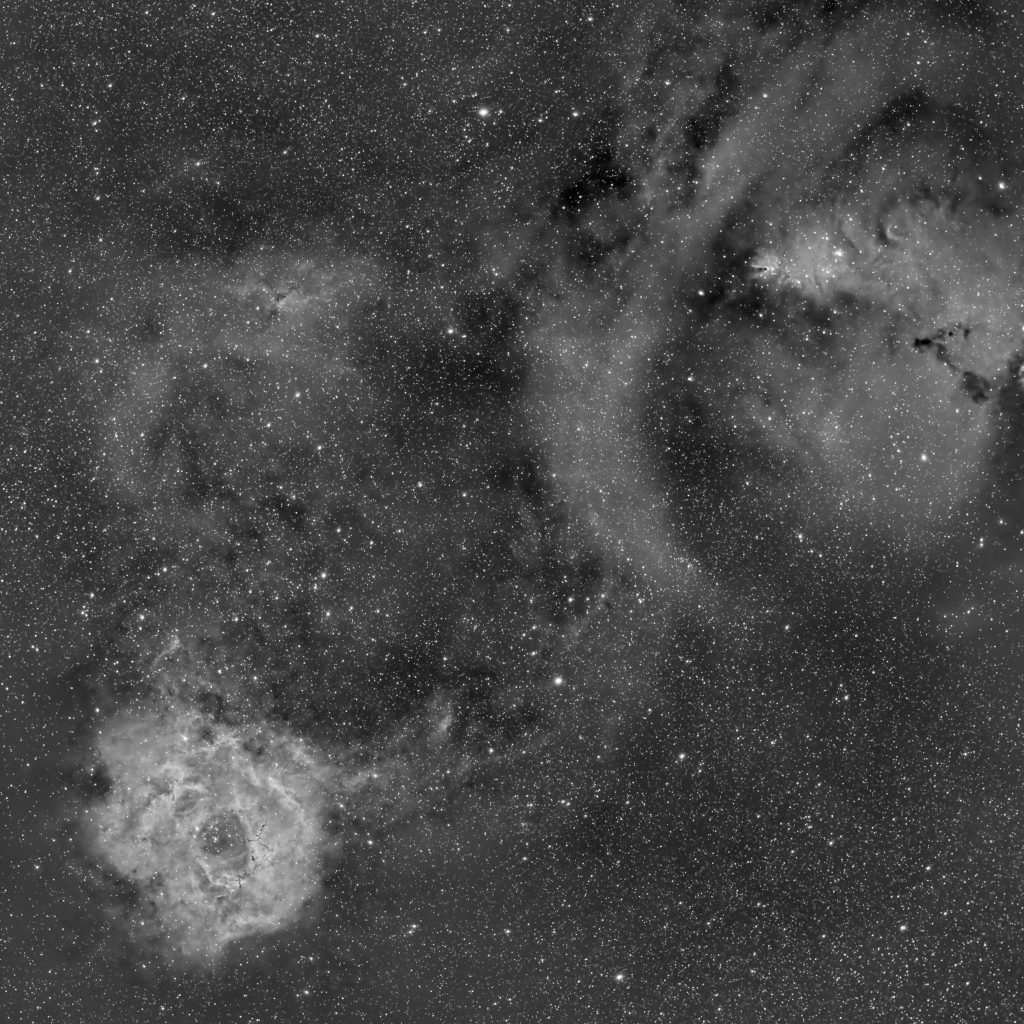
The striking detail in the star-forming region known as the Rosette Nebula makes it a favorite target of astrophotographers. But the nebula itself is set in a fascinating region of the constellations Monoceros and Orion that has other nebulae and spanking-new star clusters. This image shows the Rosette at bottom left and the smaller arrow-shaped Cone Nebula and Christmas Tree star cluster (NGC 2264) at upper right. But the much fainter arc and associated nebulosity, which I knew little about, are part of the Monoceros Loop, the remnants of a supernova explosion by one or more massive stars in this active region of the Orion Arm of the Milky Way.
Image 2 – Taurus Molecular Cloud
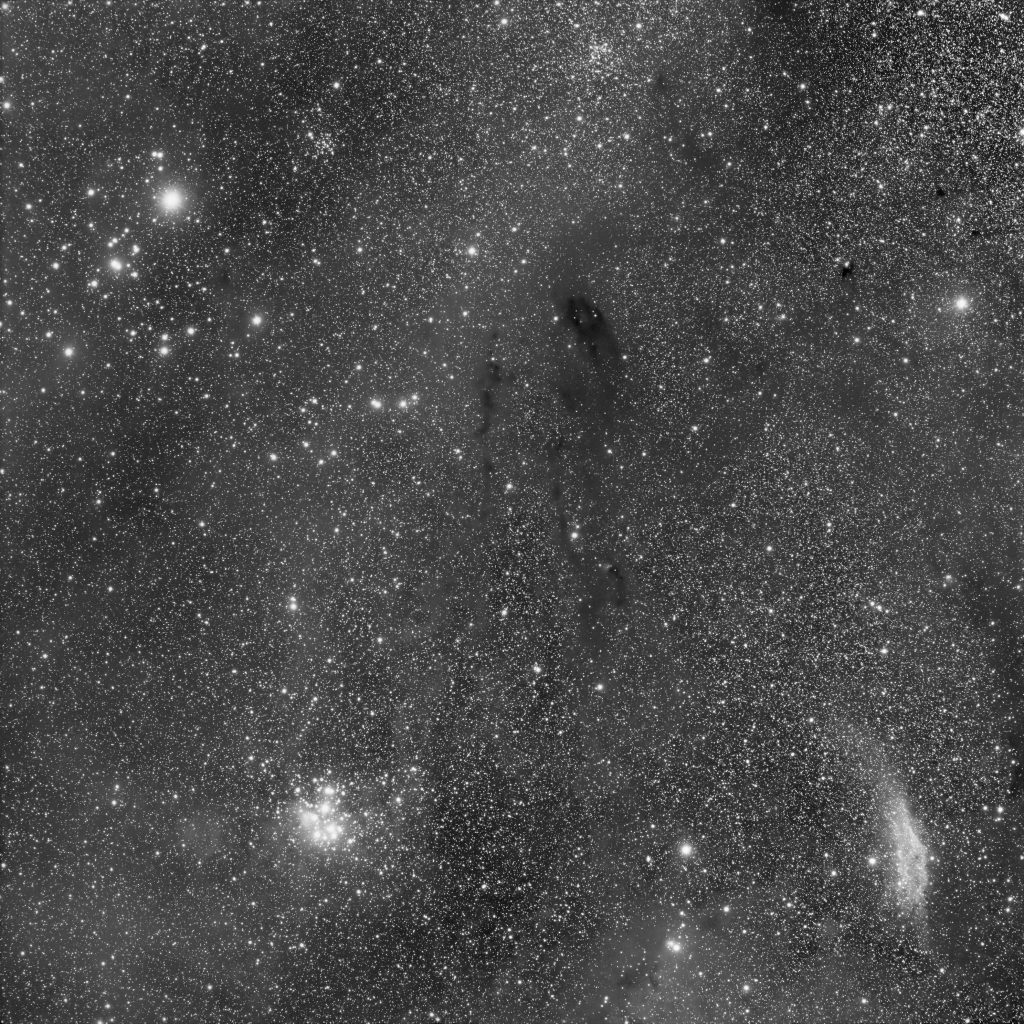
This wide-field image shows what’s easily one of my favorite parts of the night sky in a patch about 23° square. At upper left you see the Hyades star cluster along with the smaller open clusters NGC 1647 and NGC 1746. At lower left lies the Pleiades. The California Nebula (NGC 1499) sits at lower right. And above center you see the inky-dark outline of the Taurus Molecular Cloud, a nascent region of star formation that lies along the Radcliffe Wave. I captured this image in a campground outside the city in the early weeks of 2024 on a night of -20ºC temperatures. It took nearly half an hour to get the framing right, then a couple of guys arrived in a pickup truck and proceeded to light a campfire that blew thick smoke across my line of sight. But I came to get this image, and I would not be denied. I moved the gear, framed the image again, and set the camera working. I hoped to collect a longer exposure, but this one worked out well enough.
Image 3 – Barnard’s Loop
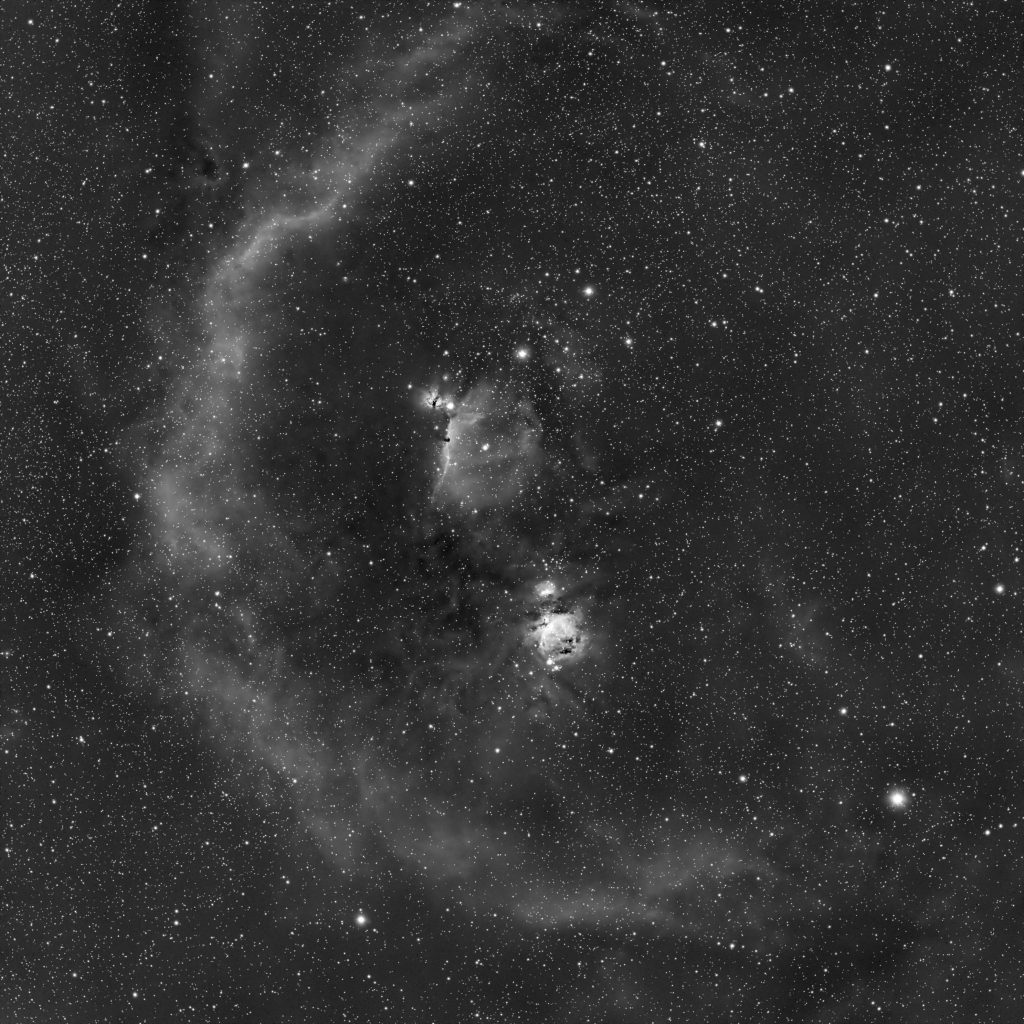
Ah, Orion! It’s hard to take a bad photo of this part of the sky (though I have managed to do so more than once). Here you see the southern part of the constellation including the sword and belt, the Orion Nebula and Horesehead Nebula, and the faint but spectacular Barnard’s Loop. I was hoping to capture this in color, but only had time to work from home, in light-polluted Bortel 7 skies, so I used a monochrome camera and narrow H-alpha filter to improve contrast. I love this part of the Milky Way!
Image 4 – The April 8, 2024 Solar Eclipse

I had planned to see the total solar eclipse of April 8, 2024 from a location close to Montreal. But the prognosis for clear skies was less than one chance in three, so I canceled the trip and took my chances to see the partial eclipse from home. Of course, Montreal enjoyed clear skies and hundreds of thousands of skywatchers enjoyed the spectacle. But it was clear in Calgary, also, so I enjoyed the event with my older daughter and captured a few images. This one shows peak eclipse through a solar telescope just after 12:30 p.m. local time. There will be a solar eclipse going right over my house in 2044 – I’ll send you an image of that if we’re both still here.
Image 5 – The Great Sagittarius Star Cloud

Images of the Milky Way through Sagittarius are not hard to find. But I wanted to try a slight different framing of this region towards the center of the galaxy. So I chose a camera and lens that offered an intermediately-wide view that showed prominent star clouds embedded in darker nebulosity flecked with individual bright nebulae and star clusters. This image shows the yellow-orange stars of the Great Sagittarius Star Cloud that lies off the spout of the Teapot asterism in Sagittarius. Spanning about 6ºx4º, this dense patch of unresolved stars appears so bright because of the lack of intervening dust and gas. Essentially, the stars here are far more distant than the dark nebula in this image. At upper left you see the Lagoon Nebula (Messier 8) and the Trifid Nebula (Messier 20), small glowing blisters of star formation in the Sagittarius Arm of the Milky Way. I spent several nights photographing star clouds during the short summer nights, and was fortunate to have an article published in Sky&Telescope magazine about exploring the many star clouds visible during northern-hemisphere summer.
Image 6 – The Small Sagittarius Star Cloud
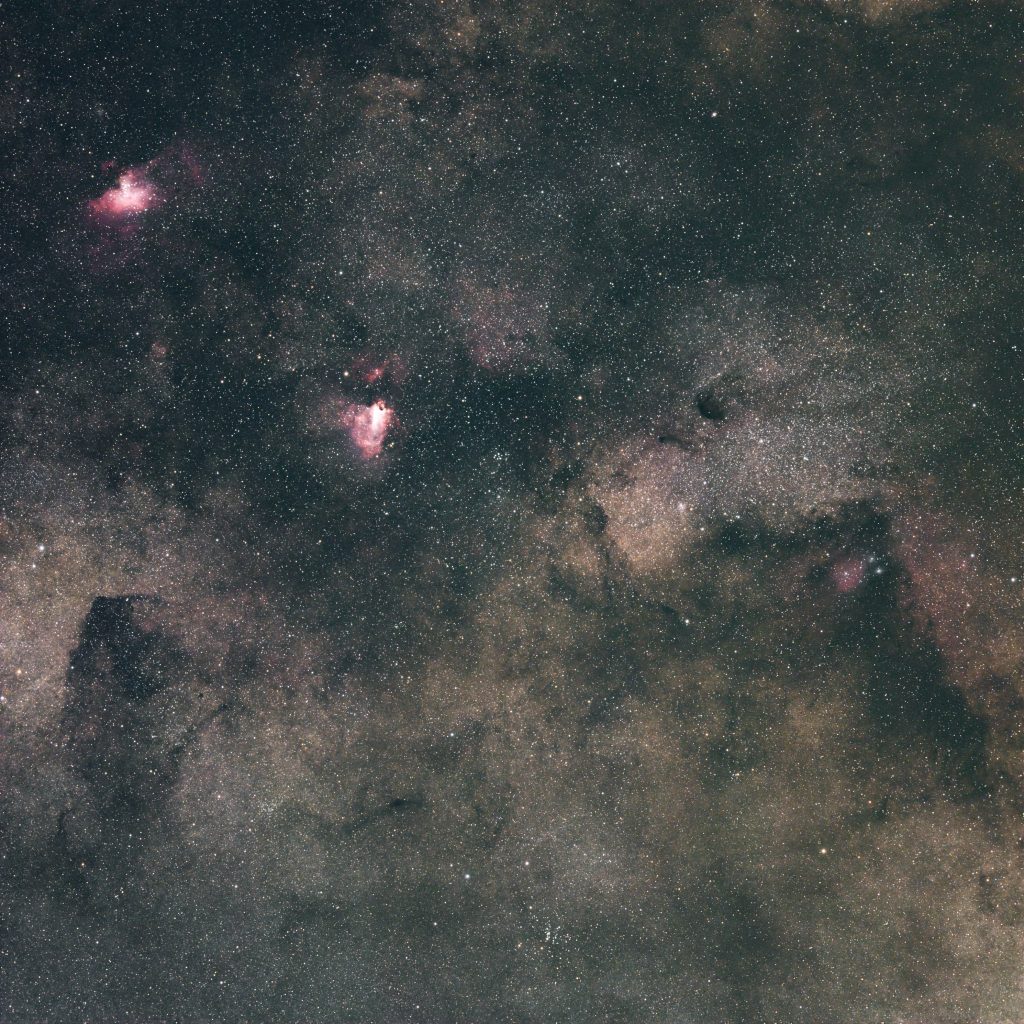
On the same night that I captured the previous image, I also snapped this one that shows the region around the Small Sagittarius Star Cloud (Messier 24). This rectangular patch, about 2ºx1º in size, is spectacular in binoculars or a telescope with a wide field of view. We see these stars through a gap in the intervening dust clouds. They lie at a distance of 9,000 light years. This is one of the best patches of the entire night sky for visual observers or astro-imagers.
Image 7 – The Veil Nebula
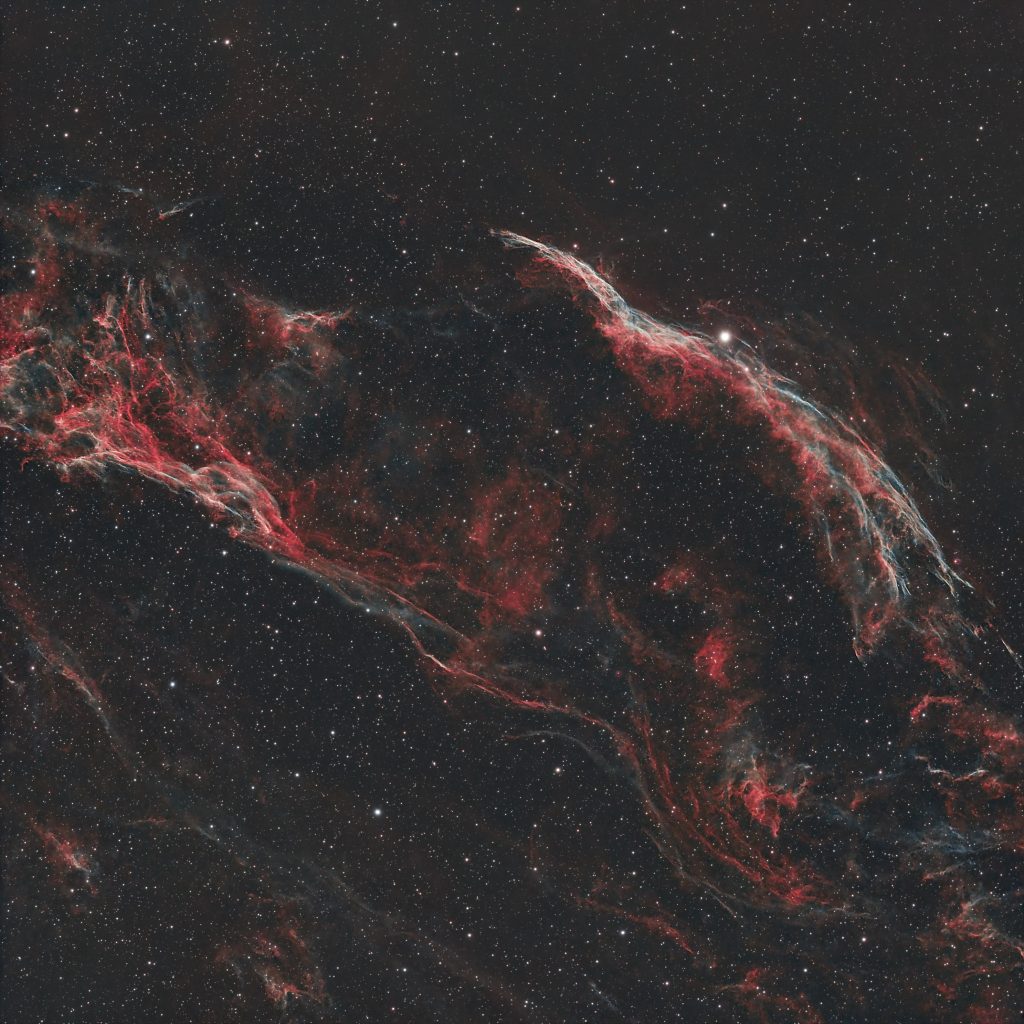
Long-time readers of this website will understand my love for the Veil Nebula in the constellation Cygnus. This intricate lacework of gas set aglow by the shockwave from a supernova explosion 15,000 years ago looks good at any scale, in any instrument, from binoculars to a large Dobsonian. I inspect it during every observing session when it’s visible, and I’ve taken dozens of images of this cosmic work of art. The entire complex spans the diameter of seven full Moons, but for this image I choose a focal length that captured only part of it including the Western Veil and the star 52 Cygni along with the wisps of nebulosity of Pickering’s Triangle. Like the Orion Nebula, no single image or visual observing experience can capture the staggering beauty of this supernova remnant.
Image 8 – Aurorae Borealis
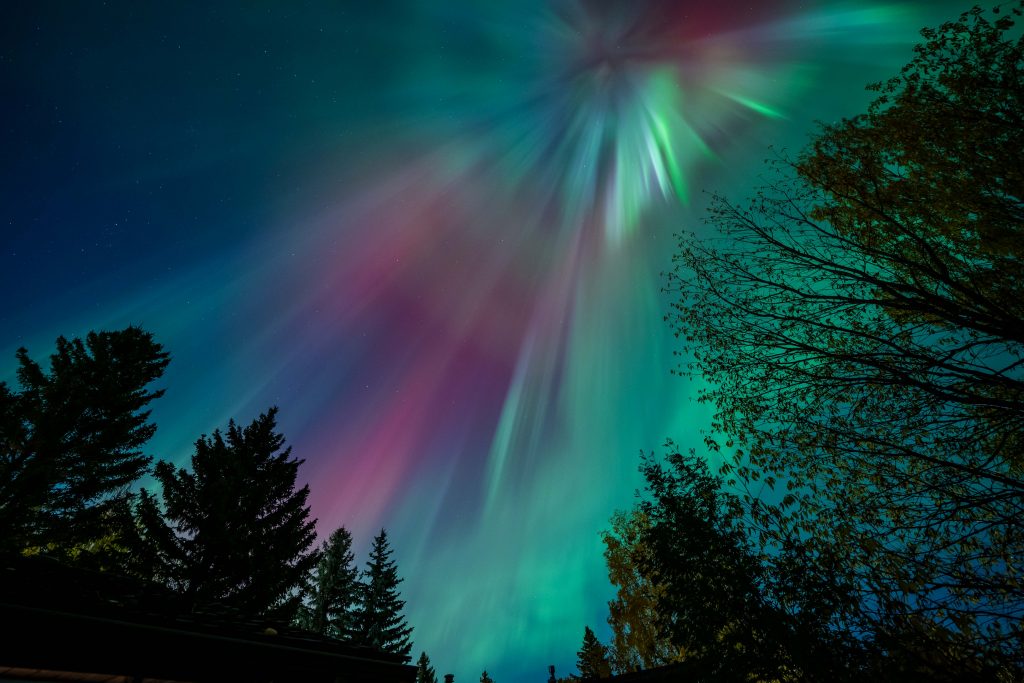
I saw a clear sky on the evening of Oct. 7, 2024, and set up the telescope to capture an image of the Andromeda Galaxy. But I noticed the first test image was an unexpected shade of green which suggested that a faint display of aurorae borealis was underway. Wrong. A spectacular display of aurorae borealis was underway! There was light everywhere, from a brilliant curtain in the north to an auroral crow overhead to rivers of blue-green light flowing from the south. Even rare red and blue aurora were visible to the eye. It was the most spectacular display I have ever seen.
Image 9 – Comet C/2023 A3 (Tsuchinshan–ATLAS)
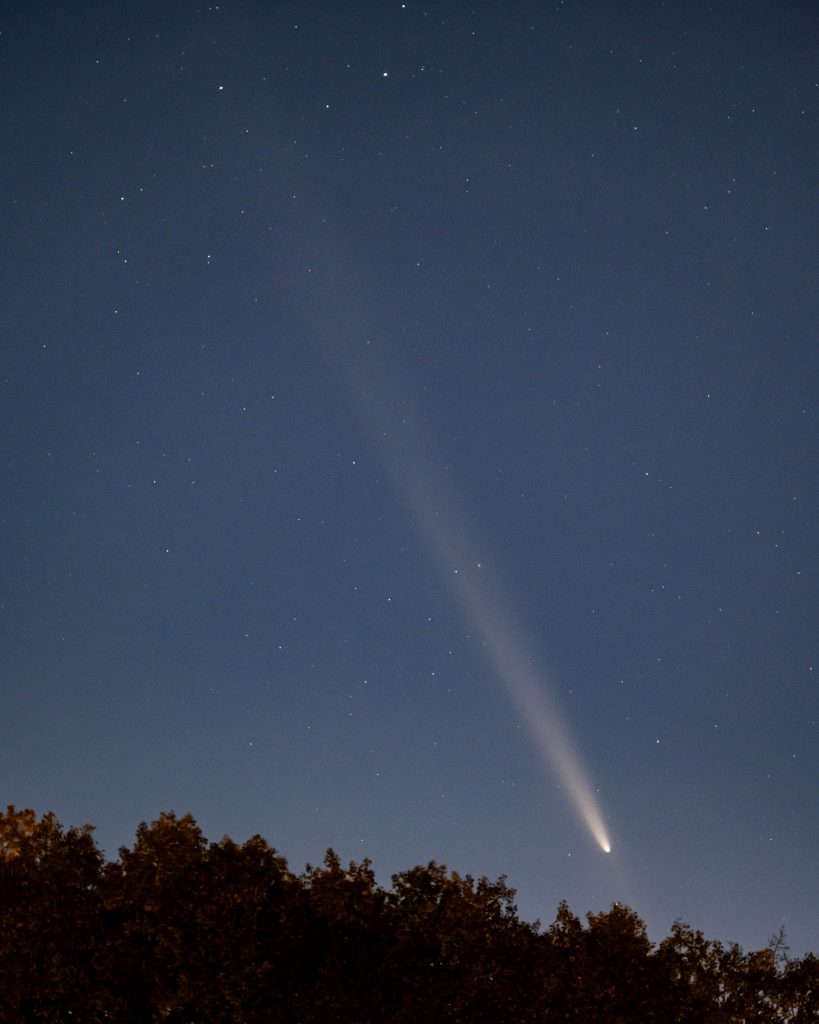
Many promising comets don’t live up to the hype, but the little Comet C/2023 A3 (Tsuchinshan–ATLAS) put on a lovely show as predicted. Visible to the naked eye for a short time in early-to-mid October, the comet made its closest approach to Earth on Oct. 12 at a distance of 77 million kilometers. Photographers far and wide captured better images than this. But this is my snapshot of this speedy little comet as it made a fleeting trip to the inner solar system.
Image 10 – The Triangulum Galaxy
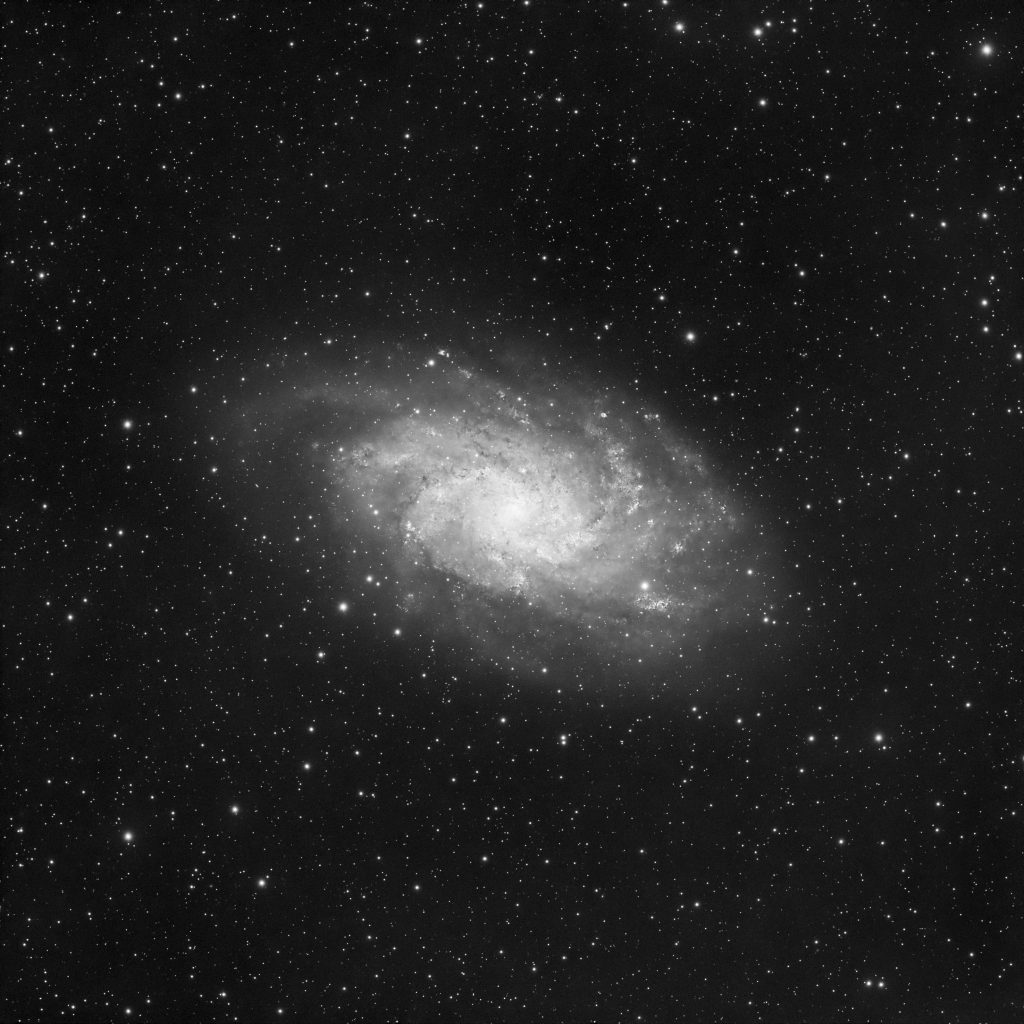
While I enjoy looking at pictures of galaxies, making images of these island universes takes patience, dark sky, and larger telescopes than I’m willing to work with. But the Triangulum Galaxy, Messier 33, is big enough to tempt me into trying to capture it. Timothy Ferris describes it visually as “lovely as a lotus blossom, but rather dim”. But it’s a more promising target for imagers. In November, from my less-than-optimum home base, I captured a monochrome image of this galaxy in the ‘Local Group’ just to see if I could do it. Perhaps I’ll try a color image of M33 in early 2025 before it sets for the year – the weather and temperature allows. There’s lots more to ‘see’ up there!
Share This: